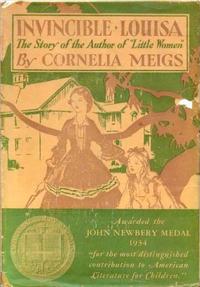Being sort of an escape artist from way back, who grew up in a large, unharmonious, restless – we're moving again? – family, when I went digging through our crowded bookshelves, I was looking for something that would take me AWAY. For me, generally, that meant fiction. Specifically, any and all books by Maud Hart Lovelace, to whom I was introduced by my cousin Myrna. AND the works of Laura Ingalls Wilder, to whom I was introduced by my third grade teacher, Mrs. Nichols. But as Susan E. Goodman so wisely pointed out, Mrs. Wilder was good at explaining how things were done in the mid-19th century. Both L.I.W. and M.H.L. were very good at explaining how ladies - the kind of long-gowned and petticoated ladies I liked to draw, on spare bits of paper and discarded Blue Bonnet margarine boxes – got dressed. Then a couple of things happened.
In second or third grade, I woke up to the splendid set of ENCYCLOPEDIA my folks had purchased once upon a time: The New Wonder World in 11 volumes. Pub'd in 1952 by Chicago's Geo. L. Shuman & Co. Loaded with photographs, classic illustrations (I discovered the work of Walter Crane. genius pen-and-inkster), poems, folktales, and – oh baybee! – Articles such as "Child Life in Many Lands." Illustrated timelines: "Great Moments in the Story of Modern Europe." (teeny little Martin Luther, angry little people @ 1789, carrying heads-on-sticks, teeny little Hitler annexing Austria) Biographies. Histories. Explorations. Glorious MAPS. All in all, an intoxicating dose of reality.
I reveled in them. I took Vol. 7, The History Book, to school so other kids could revel in it, too. Mom made sure I wrote my name on the endpapers so the book would make it back home again.
And it was right around then, that grocery stores hereabouts began offering sets of encyclopedia. Mom would bring them home from the store, one volume at a time.
 |
| One of the books that survived a great deal of hard usage. |
And then, in the summer I turned ten, my mom and dad piled us (myself and three unrequested little brothers) into the old station and we went on a drive to Mansfield, Missouri. To the house where Laura Ingalls and Almanzo Wilder, a.k.a. Farmer Boy, REALLY LIVED. I saw the desk where Mrs. Wilder wrote her books. I met a woman there, who'd known her. For the first time, I saw photographs of the Ingalls family. Found out what they really looked like, at least in that frozen moment. Both wonderful and devastating it can be, to discover an image to go with the stories, the facts, and the associations. I cannot be the only baby boomer who, having seen the Doris Day musical, was startled to see a grainy photo of the genuine Martha "Calamity Jane" Canary, having looked her up in the encyclopedia. Then read what there is of the real story of her hard old life that's come down to us - an ever so much better, more adventurous story, however grievous.
 |
| L>R: Ma, Carrie, Laura, Pa, Grace, Mary |
In any case, all of this leads me to the dog-eared book that's always right smack close to my worktable, along with my shelf of World Books. Oh sure, I Google plenty, but I just wouldn't be ME, such as I am, without a heavy, proper paper encyclopedia close by. And my tattered old Timetables of HISTORY: A Horizontal Linkage of People and Events
Does anyone need to know that, in the year that Laura Ingalls came into the world, Arturo Toscanini and Marie Curie did too? That North America's transcontinental railroad was nearing completion? That Johann Strauss II wrote The Blue Danube and Karl Marx pub'd Das Kapital? That French troops were pulling out of Mexico and Russia sold us Alaska? That Theo. Roosevelt was a precocious 9-yr-old and the Lakota Sioux still rode the prairies, rumbling beneath herds of bison. No, probably not. But what might first appear to be an encyclopedic collection of factoids, trivial tidbits, and brief introductions is nothing less than a testament of the rich, unimaginably complex context that surrounds, colors, and shapes every individual. A bit of a life-changer, recognizing the juicy, harrowing hugeness of the world in which we humans live, have lived. In this here cockeyed caravan.
And what small-minded soul ever chose to classify all of this human richness by what it is NOT? Non-fiction indeed!





2 comments:
No wonder you're a nonfiction author - a fine nonfiction author. Look at all the fascinating facts you were able to marry into one blog. Arturo Toscanini AND Karl Marx AND Doris Day. Wow! Thank you for writing this revealing and caring "faction."
what a world, what a world, Susan Kuklin. this vale of tears is a bona fide cornucopia!
Post a Comment